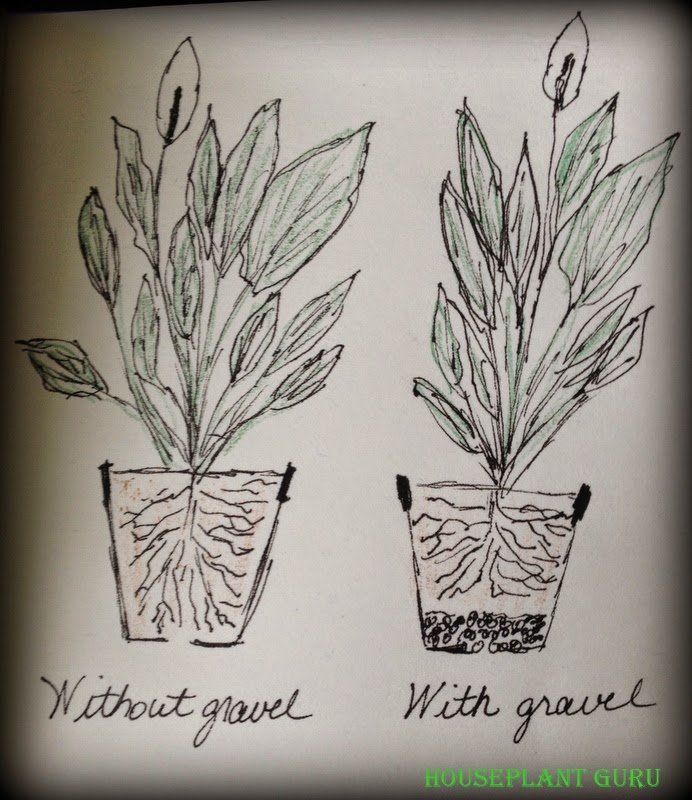Well, the reason is quite simple. As you may, or may not know, plants need oxygen in their soil to live. Air spaces are between the particles of soil. When you water your plant the water drains through the soil and out the hole in the bottom of the container. As the water drains through the soil it pulls air down through the soil with it. Every time you water your plant, you should water it until the water runs out the bottom of the pot. Empty any water left in the saucer after 30 minutes. A plant should never be left sitting in water. The soil becomes waterlogged and no air spaces are left in the soil, thus suffocating your plant. Okay, that being said, water does not drain easily from smaller pored material, such as soil, into larger pored material, such as gravel and definitely pot shards. So, the soil will be waterlogged before the water ever drains into the gravel or pot shards. Therefore, the very thing we are trying to prevent by adding "drainage" material to our containers, is actually inhibiting drainage.
I tried to draw a diagram to illustrate this concept. As you can see, (or not), the roots on the left without the gravel are filling the pot clear to the bottom. The roots on the right, are barely filling half of the pot. By adding gravel, the soil column is shortened.
Also, notice I talked about the drainage hole. EVERY houseplant should be in a container with a drainage hole. Sometimes, gravel and pot shards are also used to keep the soil in the pot and keep it from coming out the bottom hole. I find that a piece of screen does that job very well.
 |
| Potting ingredients |
So, next time you are repotting a houseplant, refrain from reaching for the "drainage" material. You will be doing your plant a favor!


Good to know, I will keep this in mind next time I repot my plants!
ReplyDeletei am with you. I always put a piece of screen in the bottom of the pot not just for this reason but because it prevents fire ants and pill bugs from setting up home in there.
ReplyDeleteI too think every pot should have a hole, and it frustrates me that most of the cute and vintage pots don't...and I don't trust myself to drill holes in them lol.
ReplyDeleteI know you've probably said before, but I can't remember...what kind of soil mixture do you use for your plants? I usually use a good type of soil bought at a nursery, mixed with pumice or perlite (I prefer pumice usually cause perlite seems to float to the top whenever I water, and opening the bags make me choke no matter how hard I try not to breathe it in, the dust seems to stay in the air for a long time). But some people seem to go all out with buying all types of soil stuff and screening them out....it's just too much of a hassle for myself....